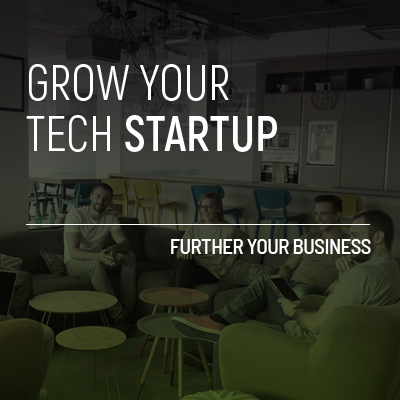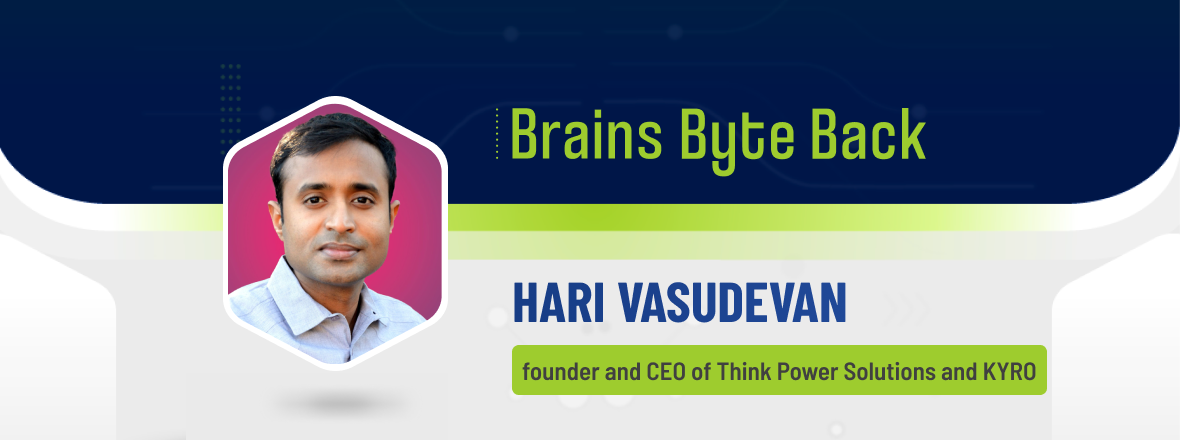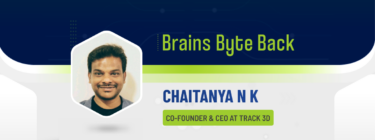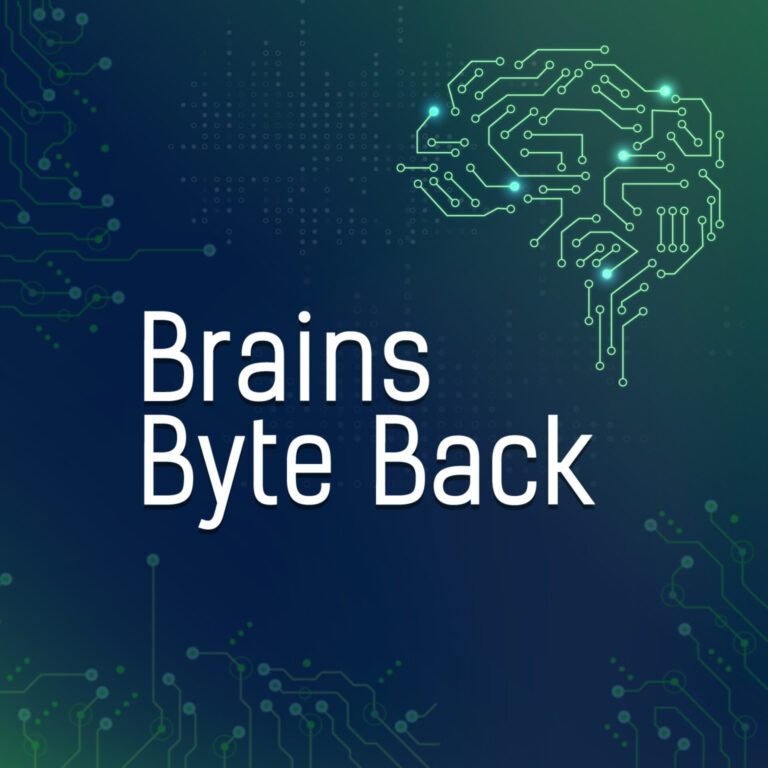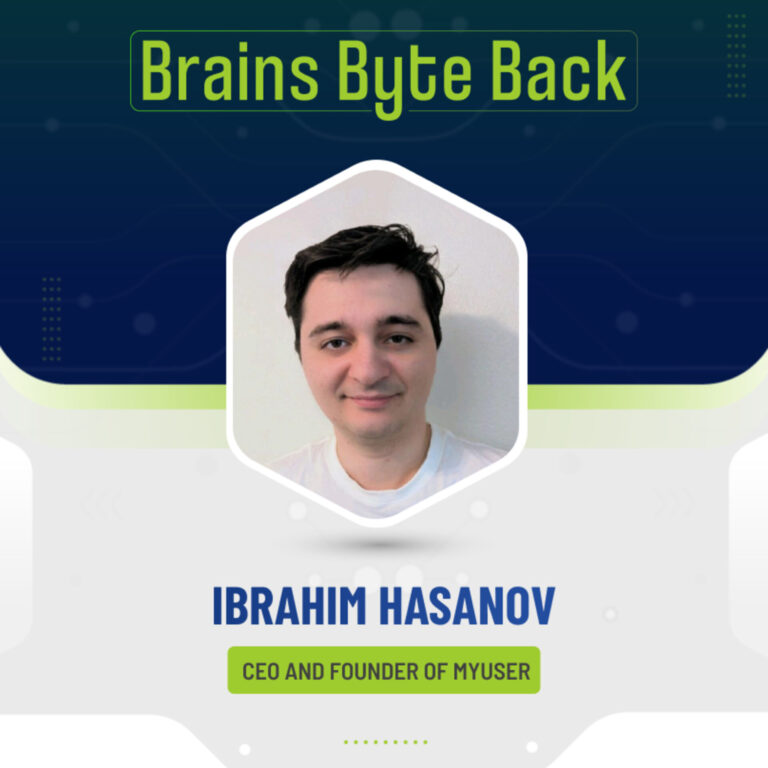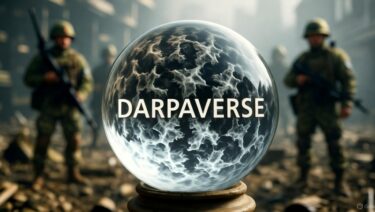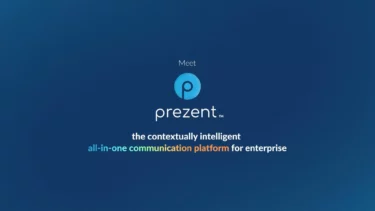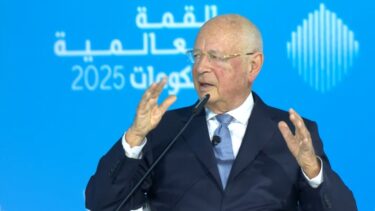In this Brains Byte Back, we sit down with Hari Vasudevan, founder and CEO of Think Power Solutions and KYRO, to explore how AI is modernizing the construction industry. With a background in engineering and large-scale capital projects, Vasudevan recognized a gap between engineers and field teams—one that often led to inefficiencies, miscommunications. And in an industry where time is money, fluency in an operation matters.
Vasudevan starts by sharing that Think Power Solutions was founded to address these issues through technology. And through it’s creation he know that advancements in tech needed to be at the forefront to drive real change, leading to the launch of KYRO in 2021 as an independent AI-powered platform.
For the CEO, adoption of AI wasn’t just about technology—it was about timing. The company embraced AI-first strategies early, allowing it to stay ahead in the rapidly evolving construction tech landscape that was already seeing multiple players enter the industry.
His foward thinkig approach was also applied to how the technology can be used in ways it never has been before with field world. For example, KYRO addresses this by incorporating multilingual AI tools, enabling Spanish-speaking employees to input data in their native language while automatically translating it for seamless collaboration.
Another feature they work to prioritize is safety, through AI-driven workforce tracking that prevents excessive overtime. Added a layer of assurance when it comes to worker safety and compliance.
An additional groundbreaking initiative is an “Uber for Storm Response” system, designed to track storms and mobilize crews efficiently to restore power faster in disaster-stricken areas. An example of how these platforms can be used to enhance resource allocation and strengthen community resilience. Allowing the application to have a further reach in it’s ability to use the technology for good.
Vasudaven also highlights how the data shared via AI can do more than just help projects but help in managing people, by helping businesses make better decisions throug objectively evaluating project managers based on performance data rather than subjective biases.
The future of construction is digital, and companies that embrace AI will lead the way in building smarter, faster, and more resilient infrastructure.
You can listen to the full episode below, or on Spotify, Anchor, Apple Podcasts, Breaker,, Google Podcasts, Stitcher, Overcast, Listen Notes, PodBean, and Radio Public.
Find out more about Hari Vasudaven here.
Connect with Brains Byte Back host Erick Espinosa here.
TRANSCRIPT:
Hari Vasudevan
My name is Hari Vasudevan, founder and CEO of Think Power Solutions. Founder and CEO of Kyro. Essentially, I make sure that the company runs well, employees are happy, customers are happy, investors are happy. That’s what I try to do.
Erick Espinosa
So the goal is to make everyone happy?
Hari Vasudevan
Yes.
Erick Espinosa
Yes, perfect.
Hari, it’s a pleasure to have you on Brains Byte Back. I really want to start with your journey because I understand that you have a background in engineering, you have a keen interest in construction, and you have a love for technology. How did the combination of all this lead to you founding Think Power Solutions in KYRO?
Hari Vasudevan
Yeah, you know, listen, I mean, I think you’ve rightly pointed out I have a background in engineering, right, and worked on really massive capital projects, lucky enough to get started on working on massive capital projects from the get-go. And then, you know, started off with highways, then Martin Doyle and gas, and then through luck and chance, I got into electric utilities. And what I did see from engineering to construction gap, right. There’s a big gap between engineering and construction, meaning us engineers, we design stuff. We think we design the best stuff in the world, right, civil engineers and Canadian engineers. But the constructability piece is always challenging, you don’t really understand the complications that come through when you’re building stuff that are engineered, right.
Engineering can happen anywhere in the world, honestly, right, thousands of miles away from the actual site. And when construction happens, you encounter situations that are not really thought through, right. So in the field, you know, crew members, supervisors, superintendents, they make decisions to ensure that the design intent is made in the field during construction process.
And that’s not always relayed back to the engineers, right. It’s called as built information for nerdy stuff, right. And I felt like, you know, there’s a gap that I could solve, because I understood construction really well, I could communicate with the field folks in the field really well. And they could communicate well with me. But that’s not always the case with everybody else, all the other engineers, I felt like I could bridge the gap between the engineering and construction. That’s how ThinkPower started, right.
And fast forward, as we were kind of building ThinkPower solutions, we wanted to create a differentiator to customers, right, we just didn’t want to go in and say, hey, here we are, we do the same thing that 10 other companies do give us work, right. So we wanted to add some differentiator that adds value to the customers. And that’s how we started embedding technology into our services.
And at some point around 2021, I realized that for technology to truly flourish and really take it to the next level to attract the right talent, right, we needed to spin it off and give a life of its own. That’s how KYRO was spun off from ThinkPower. And now it’s thriving on its own.
So that’s a long story there.
Erick Espinosa
So that’s a long story there. So when you talk about the gap, what type of gap are you talking about? Is it terms of communication, you know, collaboration? Because when you work on these big projects, even like software developers, there’s a lot of tools out there in terms of, you know, there’s a lot of moving pieces. Everybody has a has a role here.
What are you doing specifically, I guess, to bridge that gap that you’re referring to?
Hari Vasudevan
Yeah, and a great, great, great question, right. So initially, the gap I saw was the one already mentioned, right, lack of collaboration, lack of communication, how do you make sure that if the design is updated, how do you make sure that the most up to date design is what is being used in the field for construction? Believe it or not, a lot of times, you know, engineers are great at updating designs, but not communicating it in a seamless manner to the field so that the updated designs are what is being used for construction, right. And vice versa, when a change is made in the field, for constructability reasons, simple example, an engineer might have designed a foundation to be, to go two feet into rock, right.
And during the design, they might have said, you know what, we encounter rock at 10 feet. But during actual construction, you know, the rock might be at four feet for all you know, because you know, it’s not always going to be the same geologic formations. And you know, they make a decision in the field, oh, you know, once you have two feet, we’ll go four feet because it’s too shallow of a foundation.
How do you communicate that back to the office? How do you make sure that it’s documented, right? And we all might have run into situations where people are digging streets, recently paved streets, digging it again and again. And the reason is because they now don’t really have as built, accurate as built information. So the next time they actually do a project there, they may hit a pipeline or sewer line or water line, whatever that is.
And the reason is, it’s not accurately marked. And we want to make sure that that gap is solved. And that’s the original intent, right.
As I started running the business, as I scale the business, ThinkPower is now more than 400 employees. And what I really found was, it has actually has a huge financial impact. I’ll walk you through this, right.
So you go to the field, a customer gives your employee a purchase order. So the purchase order is used to set up the projects in the system, so that employees can track time properly, so that it’s, you know, billed back to the customer properly and things like that. So think about it, if a PO is not set up properly, or the project is not set up at the right PO, time is tracked incorrectly, which means, you know, your invoices are incorrect, the customer is not going to pay the invoice, which means, you know, you need more cash to run your business because, you know, it requires more working capital until you get the accounts receivable back, it has a cascading impact, if you will.
So what we did with Cairo was, hey, you know what, you could actually use the AI to scan the work orders, set up the projects properly, accurately, that means time, materials, everything else, right, equipment, everything else is tracked accurately, which means your invoices are more accurate. And honestly, which means you require less cash to run your business. In construction, as you know, right, before recording, you were telling me you’re coming from a family of driver developers, it’s a low margin business, right.
And when you have low margin, if you require more cash to run your business, which means you automatically erode margins even more, right. So it not only has an impact from our perspective, what I saw, it has an engineering and construction collaboration, communication impact, but also really a business impact on a cash flow basis, right? How do you run your business? And that’s what it’s evolved into, right? That’s why we call it as digitized projects, reduce risk and honestly maximize profits.
Erick Espinosa
Time is money in this case, right? Most people would argue, especially when it comes to construction.
Obviously, you have to value time and your efficiency with time. And just to go back into what you mentioned, because AI is an important tool that you’re using in the process, right, to guide these companies. Is this something that you had in mind, I guess, at the beginning when you were first creating Kyro? Or is it something that you just recently, I guess, as an engineer and somebody that’s in tech, you really saw the value of it early on? Because like you mentioned, there’s a lot of companies out there that kind of do similar things.
How did you look to leverage AI in order for you to have your product really stand out?
Hari Vasudevan
Yeah, no, listen, I say this to people all the time, sometimes you get lucky, right? And timing is a lot of things in life. And when Kyro was spun off, it is really the beginning of the AI stage, right? I mean, late 2021, early 2022. And super fortunate to get some really, really fantastic people as part of the founding team, right? A head of engineering, chief software architect, they really saw the vision of how the problem that I lay out there.
And they felt like, you know what, in the age of AI, we could actually run faster than the competition. And if you build the AI first construction management software, we could actually outflank the competition and go from there. So that’s how things got started from an AI perspective. I knew the problem statements, right? AI was candidly a lack of timing, if you will. And obviously, putting the right team together, attracting the right talent, that solved the rest of the problem there.
Erick Espinosa
With an industry that’s like very blue collar, and I look at my dad, and we talk about AI, and there’s some hesitation there, I guess, for more of the guys that are kind of on the ground.
So when you introduce this tool, how do you introduce it in a way that, I guess, reduces the skepticism or the fear that most people have, that it might replace their jobs, rather than make their jobs more efficient?
Hari Vasudevan
You know, it’s a great question, honestly, right? Listen, you know, I live in Texas, right? And when I work with construction folks in the field, one of the reasons why there’s a big communication gap is because if you truly think about it, in the employees in the field, many of them are Spanish speaking, right? And there’s definitely that gap, right? How do you bridge that gap between the field and the office? Because they’re more comfortable using a Spanish vernacular to convey it back to you, right? So, you know, what we’ve done is, hey, you know what, you could speak to us in Spanish, and it’ll convert it into English and get back to you. That’s a really easy win for us, if you will, right? And the ability to really convey the message. I mean, even today, if you look at the construction world, people will communicate using SMSs or MMSs with big photographs and things like that.
If you tell them, hey, listen, you can actually use the application to take pictures, document what you did, speak to the app in Spanish, it’ll convert everything into English, kick it back to you, right? It’s an easy way to communicate, you know, to communicate the value, right? To help them communicate with people who are not Spanish speakers, if you will, right? Number two is, I truly believe, you know, the many challenges in construction, if you will, right? People work long hours. I’m sure you know, your parents probably, your dad probably worked a lot of long hours, right?
Erick Espinosa
Early mornings. I remember I did it for a little while.
Hari Vasudevan
And the challenge, honestly, is it has a significant impact on health and safety, right? And, you know, I call this humanizing construction using AI. You know, your folks may have worked for themselves, right? But if you look at it from a large company, there are perverse incentives at play for project managers to kind of turn a blind eye to people working long hours, because they want to get the projects built. They want to make money.
At the end of the day, they want to make the bonuses and things like that. If you have the right tools in place to track long work hours, long stays away from home, and, you know, honestly, risky job site behaviors, if you can use AI to kind of track all those and nudge different stakeholders who may have incentives that are not always aligned to financial outcomes, right? Hey, project manager, this person has been working 80-hour work weeks for the last six weeks. Time for him or her to take a break, right? And same nudge goes to the safety person.
The safety person has a different incentive to keep the project safe, right? And the project manager has an incentive to get the projects done. But when two of them get the same nudge, at the end of the day, if the company’s run well, the safety aspect is going to run over the getting the job done. Because honestly, when you do turn a blind eye to health and safety, it comes back to bite companies in the back.
Because, you know, if an incident happens, you could literally, the company could go bankrupt, right? So honestly, if people are running the company well, all those things will take care of itself. So, you know, AI to humanize construction with different nudges helps. So back to your question, right? Tying it all together, how do you get people to actually buy into your vision is number one, is ability to communicate.
And honestly, if we tell them, hey, this is all is going to help you keep safe, not going to take your jobs away. It’s not going to, robots are not going to build homes, right? But it’s truly helping you become more efficient. I think it’s a way to get people on board.
Erick Espinosa
I think that’s a very creative way in using AI, especially when it comes to languages, right? Like really understanding the overall uses that it could have in the industry. Is there anything right now, because AI is really advancing, is there anything that you’re kind of looking at right now or new features that may be down the line you’re maybe playing around with?
Hari Vasudevan
Yeah, no, we’re playing with a lot of cool stuff, you know, by processing images and trying to look for issues in the images that is not visible to the naked eye by training, you know, the system through tons of other similar issues and things like that, right? That’s one thing we’re trying to do. I think we’re really trying to do is what I call the Uber for Storm Response, right? Where do you live, Erick? I’m just trying to be curious.
Erick Espinosa
I’m based out of Toronto.
Hari Vasudevan
Toronto, okay, there you go.
Erick Espinosa
The City of Cranes is what we like to call it.
Hari Vasudevan
What is that?
Erick Espinosa
The City of Cranes is what we like to call it because we have two seasons. It’s construction or winter, one or the other.
Hari Vasudevan
So, if you think about it, you know, I’m sure you’ve read about the LA wildfires, you know, the storms a few months back in the Carolinas and Florida, Haleen, I think, right? All these things, what you need to recover from the storm is a super fast storm response for storm restoration, if you will, right? What do you need for all those things? You need restoration crews, which are nothing but construction crews, right? You first need to evaluate damage and then you need to send crews back in there to get them up and running, right? On the electric utility side, which has been a significant part of my business at ThinkPower, right? ThinkPower Solutions is like we’re developing something where, you know, we’re tracking storms, right? We’re tracking resources that are close to those storms, right? Close meaning four, eight hours away, right? And when the storm hits, we’re able to bring people together very, very quickly in minutes as opposed to days and hours and send them to restore from a storm damage, if you will, right? Again, time is money. So, faster the response, it’s better for the local communities to get back on running. You don’t want to lose power for weeks at a time.
You know, if your power is up and running in days or hours, that’s great, right? So, we’re helping get there. So, from an AI perspective, we’re tracking storms, collating storm response crews together, sending them out there, tracking time, tracking equipment, tracking expenses, putting all these things together, sending accurate invoices to the customers, getting our rate payers back up and running with power, minimizing power outages. That’s one thing where we’re really, really practically impacting a service using AI.
Erick Espinosa
In a way, it’s kind of like leveraging AI for good, not just in terms for business, right, but helping people in the community.
Hari Vasudevan
Absolutely. I mean, that’s truly what we believe in.
AI can be used for a lot of things, and some people use it for positive things, and some people use it for nefarious things. But even positive things, I like to see things used in a way that directly impacts people in a positive way, and that’s what we’re trying to use.
Erick Espinosa
Amazing.
So, I’m going to put you on the spot here, because I feel like this is a question that’s going to make you think. What’s the most surprising insight your AI tool has uncovered for a company that you’ve worked with?
Hari Vasudevan
You know, it’s a great question. So, you know, when we rolled out the first AI within Think Power, what is not always obvious to that in terms of, hey, you know what, we had obviously multiple supervisors managing multiple teams, right? Sometimes you really don’t know who your top performers are.
I mean, there’s this perception out there, it’s like, hey, project manager A is doing a great job, project manager B is doing a great job. It could be for a variety of reasons, hey, you know, you like him or her, you like him or her, how they talk and things like that, right? But when you see the results, and the results are much more, you know, they speak louder than words, right? What we were able to do was we were able to put AI in the hands of these project managers, and they are able to gather insights into their operations using natural language queries. Hey, what is my overtime here? What is my regular time here? What is the impact of that on my business? And when you see them make adjustments to their business based on the use of AI, that really, really shows who the great performers are, who’s the star of the future, potential star of the future, and things like that.
So we’ve really been able to leverage AI in a nutshell, we’ve been able to leverage AI to optimize our businesses, develop our people, and see the growth for them. That’s been the greatest insight for me from an AI perspective.
Erick Espinosa
In a way, it sounds like that could also eliminate bias with some people, maybe, you know, favoritism with some, but when they look at the data itself, it kind of tells a story of how the employees are performing in a non-objective way.
Hari Vasudevan
You’re able to actually, listen, I mean, there are always been dashboards, there’s always been a way in which you can visualize it, right? But when you’re querying information in a way that is much more natural to you, natural question, which is different for different people, is like, I can say, hey, can you show me, compare the financials of three project managers over the last three months, right? That’s an easy way, that’s a natural way in which I think, right? If you put it in the hands of a project manager, and give them the power to ask that question, what it does for them is they may or may not feel comfortable going to the CFO or the controller or whoever on the finance side is to ask that information. But if you give it to them, the power of AI, what it really does do is it allows them to query a question that they have in their mind in their own vernacular and have the system output it and make adjustments to their business because we run a very entrepreneurial business. And when you’re able to do that, you’re able to see who fits within the company’s future better than somebody else, right? And we’re able to do that much more effectively because not everybody’s wired the same way.
Some people are introverts, some people are extroverts, some people are more comfortable asking for help, some people are not, some people are happy to reach out to CFO, some people are not. So we’re able to see this impact of it in a much more meaningful way as we run the business.
Erick Espinosa
Hari, thank you so much for joining us on the podcast and contributing your insight.
Honestly, valuable. It’s good to see how you’re basically bringing construction into the future. If somebody’s interested in connecting with you, what’s the best way they can reach out?
Hari Vasudevan
I’m very active on LinkedIn. They can definitely find me on LinkedIn, shoot me an email, [email protected] or [email protected]
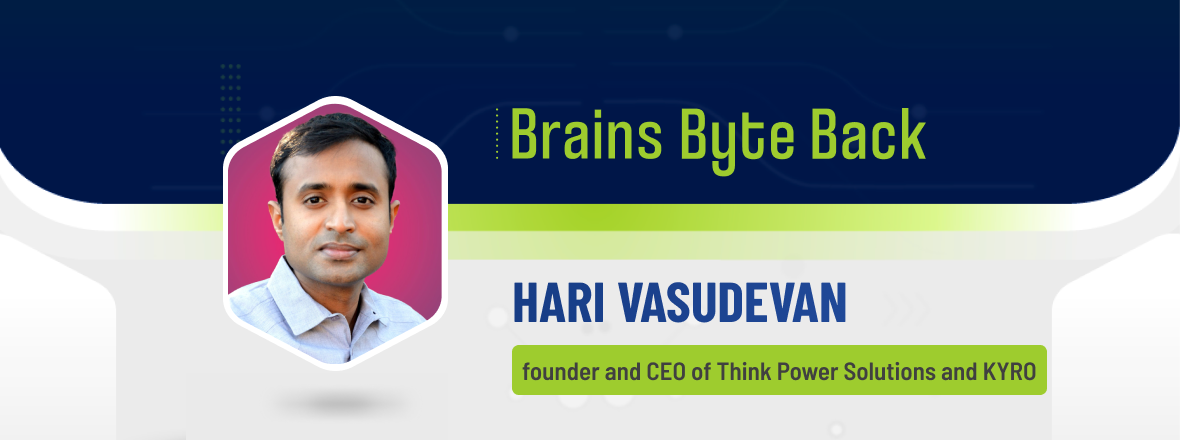
Image credit: The Sociable
Disclosure: This article mentions a client of an Espacio portfolio company.
